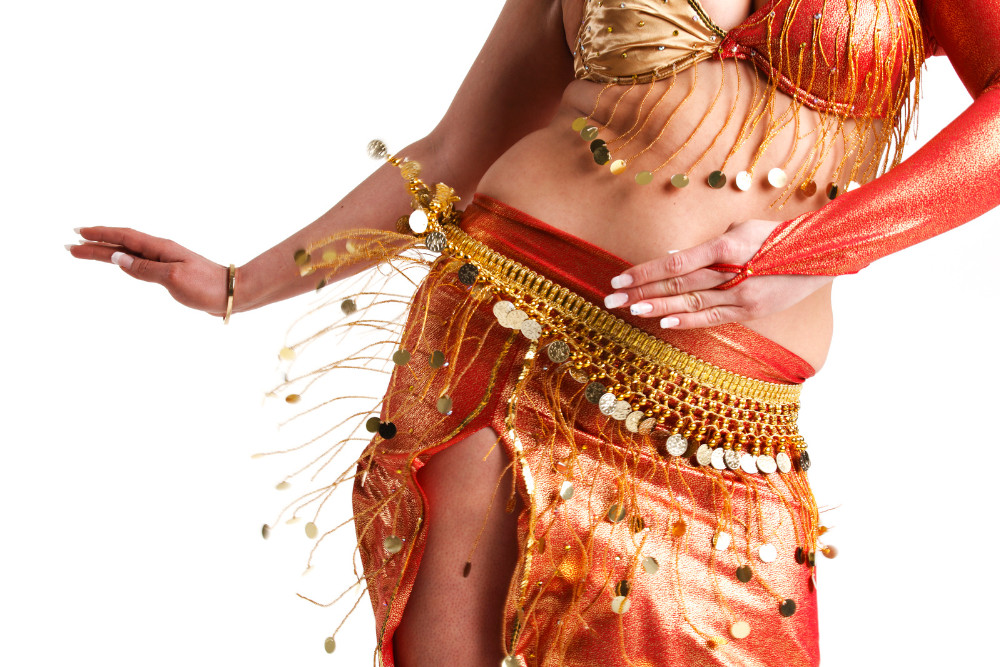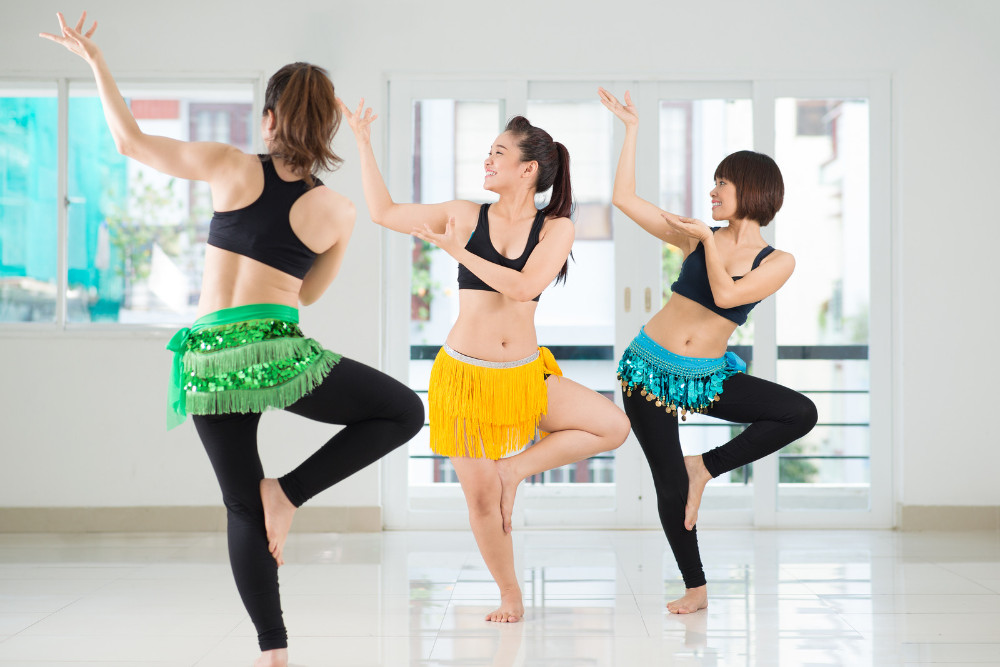What is it about belly dancing that has captivated audiences globally for centuries? It’s more than just the mesmerizing movements, the enchanting music, and the rich cultural tapestry; it’s a profound narrative woven through history, tradition, and human expression. Belly dance, or Raqs Sharqi as it’s known in the Middle East, is not merely a dance style but a historical journey, a cultural dialogue, and a powerful articulation of emotion and heritage. This article delves into the captivating Belly Dance Origin And History, tracing its evolution, cultural significance, and the diverse styles that have blossomed over time. Whether you are a seasoned dancer, a history enthusiast, or simply intrigued, join us as we explore the intricate and vibrant story of belly dance, from its ancient beginnings to its contemporary global presence.
The Ancient Tapestry of Belly Dance Origins
 the origins of belly dancing
the origins of belly dancing
Tracing Back to Antiquity
The belly dance origin is deeply embedded in the ancient civilizations of the Middle East, North Africa, and the Mediterranean. While pinpointing an exact birthplace is challenging due to the dance’s organic evolution across vast regions and times, archaeological findings and historical accounts suggest its roots stretch back to ancient Mesopotamia, Egypt, and the matriarchal societies of the ancient Mediterranean. Evidence points to early forms of belly dance being intrinsically linked to fertility rituals and celebrations in these regions.
In ancient cultures, particularly those centered around agrarian societies, fertility was paramount for survival and prosperity. Dance played a crucial role in these societies, often intertwined with spiritual practices. It is believed that movements resembling belly dance were performed by women in rituals intended to honor goddesses of fertility and ensure bountiful harvests and healthy childbirth. These early dances were not just performances but sacred rites, deeply connected to the cycle of life and the feminine divine.
Ancient Egyptian art, dating back to the Pharaonic era, depicts figures in poses and movements that bear a striking resemblance to belly dance. Wall paintings and statues suggest that dance was a significant part of religious and courtly life, with women musicians and dancers holding respected positions. Similarly, in Mesopotamia, the cradle of civilization, evidence from cuneiform tablets and archaeological discoveries indicates dance forms with undulating movements were part of religious ceremonies and communal celebrations.
The symbolism of these ancient movements was profound. The circular and undulating motions were often seen as imitations of natural cycles, like waves, the movement of snakes, or the fertile curves of the female body, all representing life, creation, and renewal. These dances were not merely aesthetic expressions but potent symbolic acts designed to connect with the spiritual and natural worlds.
Cultural Crosscurrents and Early Evolution
As these ancient societies interacted and traded, dance traditions began to influence one another. The movement of people and ideas across the Mediterranean and the Middle East facilitated a cultural exchange where dance forms were adapted and integrated into new contexts. This early period of cultural fusion laid the groundwork for the diverse regional styles that would emerge later in belly dance history.
The Romani people, originating from the Indian subcontinent and migrating westward through Persia and into Europe, played a significant role in the dissemination and evolution of dance forms that contributed to belly dance. Their nomadic lifestyle and vibrant cultural traditions facilitated the exchange of music and dance across vast geographical areas. While their precise contribution to the very origins is debated, their later influence in regions where belly dance flourished is undeniable.
Belly Dance Through the Ages: Transformation and Adaptation
 belly dance course
belly dance course
The Medieval Period and the Islamic Golden Age
The medieval period witnessed fluctuating attitudes towards belly dance, reflecting broader societal shifts and religious interpretations. During the Islamic Golden Age (roughly 8th to 13th centuries), a period of remarkable cultural and intellectual flourishing in the Islamic world, dance, including forms ancestral to belly dance, found patronage in royal courts and urban centers. It was seen as a refined art form, enjoyed by both men and women in segregated settings. Female dancers, often highly skilled and respected, performed for entertainment and celebration within the palaces of caliphs and sultans.
However, alongside periods of appreciation, there were also times when belly dance faced suppression, often due to conservative religious or social views that deemed it too sensual or immodest. Despite these challenges, belly dance persisted, often adapting to survive in different social strata and contexts. It continued to be a part of folk traditions, celebrations, and private gatherings, even when it was not publicly promoted or officially sanctioned.
Historical accounts from travelers and scholars during the Byzantine and Ottoman Empires provide glimpses into the diverse roles and perceptions of dance. Some accounts describe dancers performing in public squares and marketplaces, while others detail more intimate performances in private homes or harems. These varied contexts demonstrate the dance’s resilience and adaptability, as it navigated changing social norms and political climates.
The 20th Century Renaissance and Global Spread
The 20th century marked a turning point for belly dance, witnessing its resurgence and global popularization, particularly in the West. Several factors contributed to this renaissance. Firstly, the rise of orientalism in the late 19th and early 20th centuries in Europe and America led to a fascination with Middle Eastern cultures, including dance. World’s Fairs and expositions showcased performers from the Middle East, introducing Western audiences to belly dance, albeit often through an exoticized lens.
Hollywood played a pivotal role in popularizing belly dance on a global scale. Films featuring dancers in glamorous costumes, though often inaccurately portraying the dance’s cultural context, captured the public imagination and sparked widespread curiosity. Dancers like Badia Masabni in Egypt, who modernized and theatricalized Raqs Sharqi for stage performance, further contributed to its growing appeal and shaped what would become known as “cabaret belly dance.”
Traveling dance troupes and instructors began to emerge, bringing belly dance to Western audiences directly. This led to the establishment of belly dance communities and schools in various parts of the world, fostering a deeper and more authentic appreciation for the dance form beyond its exoticized image. The latter half of the 20th century and the early 21st century have seen an explosion of interest in belly dance, with diverse styles evolving and flourishing globally.
Modern Belly Dance: Fusion and Innovation
Contemporary belly dance is characterized by its incredible diversity and innovative spirit. While traditional styles like Egyptian Raqs Sharqi, Lebanese, and Turkish belly dance continue to be practiced and revered, modern dancers have embraced fusion styles that blend belly dance with other dance genres.
Tribal Fusion belly dance, for example, emerged in the late 20th century in America, combining elements of belly dance with modern dance, flamenco, hip-hop, and various folkloric traditions. This style is known for its dramatic costumes, powerful stage presence, and incorporation of diverse musical influences. American Tribal Style (ATS) is another significant modern style, emphasizing improvisational group dance and drawing inspiration from North African and Indian folk dances.
Gothic belly dance, cabaret belly dance, and even belly dance infused with elements of ballet or jazz demonstrate the ongoing evolution of the art form. Modern belly dancers are constantly pushing boundaries, experimenting with new movements, music, and costume aesthetics, while still honoring the foundational techniques and rich history of belly dance.
Cultural Significance and Symbolism
Deeply Rooted Symbolism and Traditions
Belly dance is replete with symbolism, where each movement, gesture, and costume element carries layers of meaning. The undulating movements, central to belly dance, often symbolize natural forces – the ebb and flow of water, the rolling desert dunes, the cyclical nature of life, death, and rebirth. These movements are not just physical techniques but embodied metaphors for the rhythms of the natural world.
Traditional costumes are also rich in symbolism. Coins sewn onto costumes were historically believed to bring prosperity and were part of a dancer’s dowry. Intricate beadwork and embroidery often reflect regional artistic traditions and can signify status or affiliation. The veil, a ubiquitous prop in many styles of belly dance, can symbolize mystery, allure, and the unveiling of secrets, adding a layer of dramatic narrative to performances.
Historically, belly dance was performed at significant life events – weddings, births, and community festivals. It was a dance of celebration, fertility, and communal joy, marking important rites of passage and reinforcing social bonds. Even in contemporary settings, belly dance retains its power to celebrate femininity, community, and life’s milestones.
Belly Dance in Contemporary Culture
In today’s globalized world, belly dance has transcended its geographical origins to become a truly international art form. It is practiced and performed by people of diverse backgrounds and cultures, reflecting its universal appeal and adaptability. Belly dance is not just a performance art but also a form of exercise, a way to connect with cultural heritage, and a means of self-expression and empowerment.
In popular culture, belly dance continues to be represented in various forms, from music videos and films to stage productions and dance competitions. While some representations may still perpetuate stereotypes, there is also a growing awareness and appreciation for the dance’s complexity and cultural depth. Many contemporary belly dancers are actively working to educate audiences, promote authentic representations, and use belly dance as a platform for cultural exchange and understanding.
Exploring Styles and Techniques
A Spectrum of Traditional Styles
The world of belly dance encompasses a rich tapestry of traditional regional styles, each with distinctive characteristics:
-
Egyptian Raqs Sharqi: Often considered the classical style of belly dance, it is characterized by fluid, graceful movements, intricate hip work, and a strong connection to Arabic music. It emphasizes emotional expression and storytelling through dance.
-
Lebanese Belly Dance: Known for its elegance and sophistication, Lebanese style is characterized by flowing movements, graceful arm patterns, and a balance between grounded earthiness and airy lightness.
-
Turkish Belly Dance (Çiftetelli): Energetic and playful, Turkish style often incorporates more dynamic floor work, zills (finger cymbals), and expressive facial expressions. It is known for its lively and engaging quality.
-
Moroccan Belly Dance (Shikhat): A more earthy and grounded style, Moroccan belly dance often features strong hip movements, percussive steps, and a focus on rhythm and stamina.
These are just a few examples of the diverse traditional styles, each reflecting the unique cultural heritage of its region of origin.
Modern Fusion Techniques
The spirit of innovation in belly dance has led to the emergence of numerous fusion styles, blending belly dance with other dance forms and artistic influences:
-
Tribal Fusion: Combines belly dance with elements of modern dance, flamenco, gothic, and tribal dance forms. It often features dramatic costumes, intricate layering of movements, and a theatrical performance style.
-
American Tribal Style (ATS): A modern improvisational style performed in a group, ATS draws inspiration from folkloric dances of North Africa, Spain, and India. It emphasizes group cohesion, non-verbal communication, and a distinctive aesthetic.
-
Cabaret Belly Dance: A theatrical style that evolved from early 20th-century Egyptian nightclubs, cabaret belly dance often incorporates props like veils, canes, and finger cymbals, and is designed for stage performance and audience entertainment.
-
Gothic Belly Dance: Merges the graceful movements of belly dance with the aesthetics and music of gothic subculture, often featuring dark, dramatic costumes and themes.
These fusion styles demonstrate the boundless creativity and adaptability of belly dance, constantly evolving while staying connected to its roots.
Embarking on Your Belly Dance Journey
Finding the Right Classes and Instructors
For those inspired to learn belly dance, finding quality instruction is essential. Here are some steps to guide you:
-
Local Dance Studios and Schools: Search for dance studios or schools in your area that specialize in belly dance or offer Middle Eastern dance classes. Dedicated belly dance studios often provide the most focused and expert instruction.
-
Online Directories and Communities: Explore online directories and social media groups dedicated to belly dance in your region. These platforms can help you find instructors, classes, and workshops near you.
-
Instructor Credentials and Experience: When choosing a class, inquire about the instructor’s training, experience, and teaching methodology. Look for instructors with a solid background in belly dance and a clear approach to teaching technique and cultural context.
-
Beginner-Friendly Classes: Start with beginner classes that focus on foundational movements, posture, and basic techniques. A good beginner class will provide a solid base for developing your skills and understanding of belly dance.
Essential Techniques and Foundational Moves
Mastering the fundamental techniques is crucial for any aspiring belly dancer. Some key moves to learn include:
-
Hip Shimmy: A signature belly dance move involving rapid vibrations of the hips, created by alternating muscle contractions. It adds dynamism and rhythm to the dance.
-
Torso Undulations: Fluid, wave-like movements of the torso, moving through the chest, ribcage, and abdomen. Undulations create a sense of grace and flow.
-
Hip Circles and Figure Eights: Circular and figure-eight patterns traced with the hips, developing hip articulation and control. These are fundamental for many belly dance steps.
-
Basic Footwork: Simple steps, shuffles, and weight shifts that provide grounding and rhythm for upper body movements. Footwork patterns vary across different styles.
-
Veil Technique: Learning to manipulate a veil gracefully, creating flowing patterns, extensions, and dramatic effects. Veil work adds visual artistry and expressiveness.
Consistent practice and patient dedication are key to mastering these techniques and progressing in your belly dance journey.
Conclusion: The Enduring Allure of Belly Dance
Belly dance, with its captivating blend of history, culture, and movement, continues to enchant and inspire across the globe. From its ancient roots in fertility rituals to its modern expressions in fusion styles, belly dance has proven to be a dynamic and evolving art form. Whether you are drawn to its historical depth, its vibrant styles, or the sheer joy of movement, belly dance offers a unique pathway to connect with a timeless tradition and explore the expressive potential of the human body.
At Cazbar restaurant, you can witness the magic of belly dance firsthand through our captivating belly dancing show. Immerse yourself in the vibrant atmosphere, savor delicious Turkish cuisine, and experience the timeless allure of this ancient and beautiful dance form. As you delve deeper into the world of belly dance, you will uncover a rich tapestry of beauty, history, and cultural heritage that continues to resonate with people around the world.
Frequently Asked Questions
What are the health benefits of belly dance?
Belly dance offers numerous health benefits, including improved core strength, increased flexibility, enhanced coordination, and better posture. It’s also a low-impact cardiovascular workout and can be an effective stress reliever.
Is belly dance exclusively for women?
While traditionally associated with women, belly dance is not gender-exclusive. Men also practice and perform belly dance, bringing their own interpretations and styles to the art form. The dance is inclusive and welcomes practitioners of all genders.
How should I choose my first belly dance costume?
For beginners, comfort and ease of movement are key. Start with comfortable dancewear like leggings or yoga pants and a fitted top. As you progress and explore different styles, you can consider more traditional costumes like hip scarves, coin belts, or eventually bra and belt sets. Choose costumes that make you feel confident and allow you to move freely.
How long does it typically take to become proficient in belly dance?
The learning curve varies depending on individual dedication, practice frequency, and natural aptitude. Basic movements can be learned within a few months of regular classes. However, achieving proficiency and artistry in belly dance is an ongoing journey that can take years of dedicated practice and study.
What types of music are used for belly dance performances?
Belly dance music is incredibly diverse, ranging from traditional Middle Eastern and Arabic music to modern fusion tracks incorporating electronic, pop, and world music elements. The music’s rhythm, melody, and instrumentation guide the dancer’s movements and contribute to the overall atmosphere of the performance.

